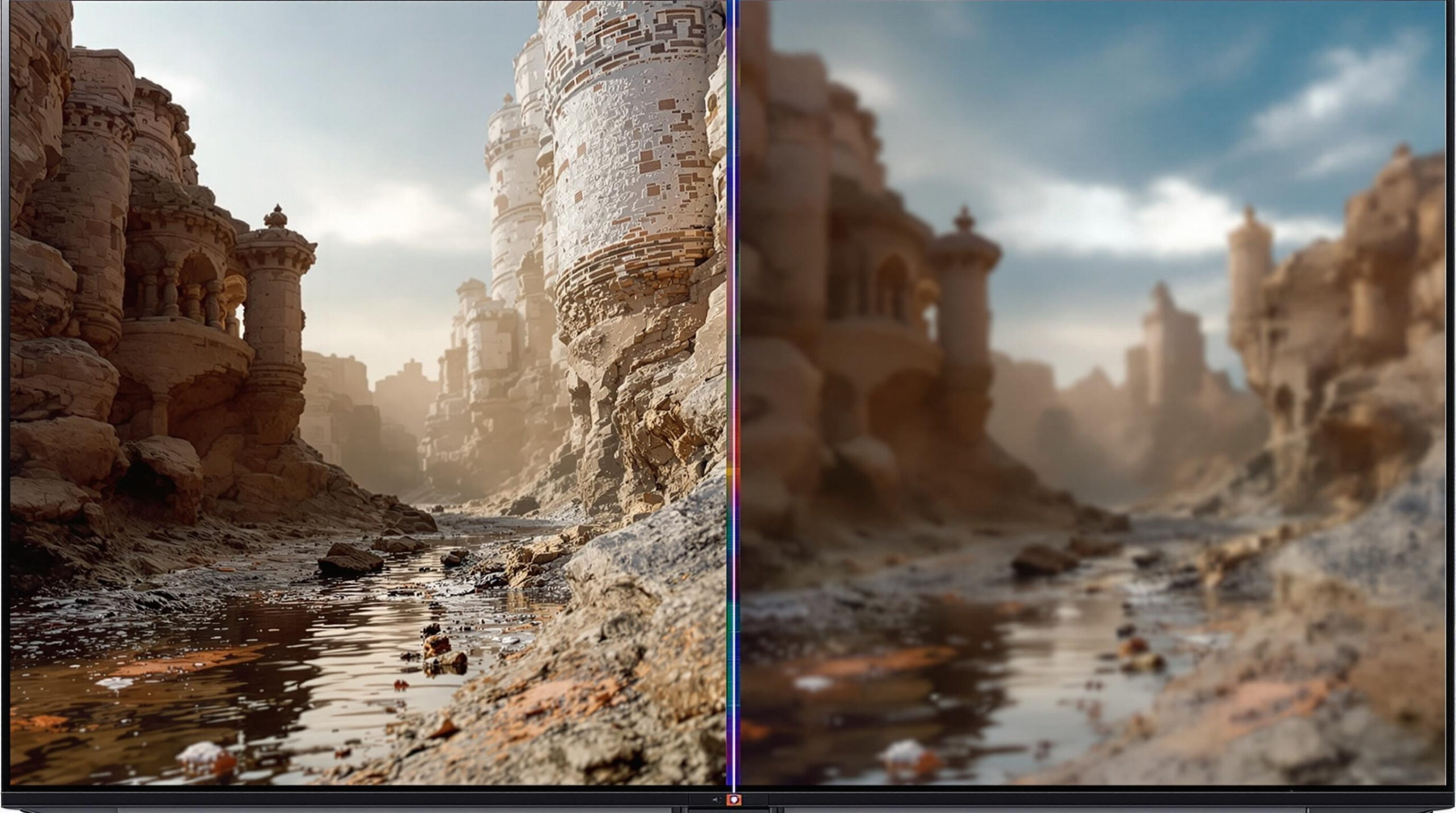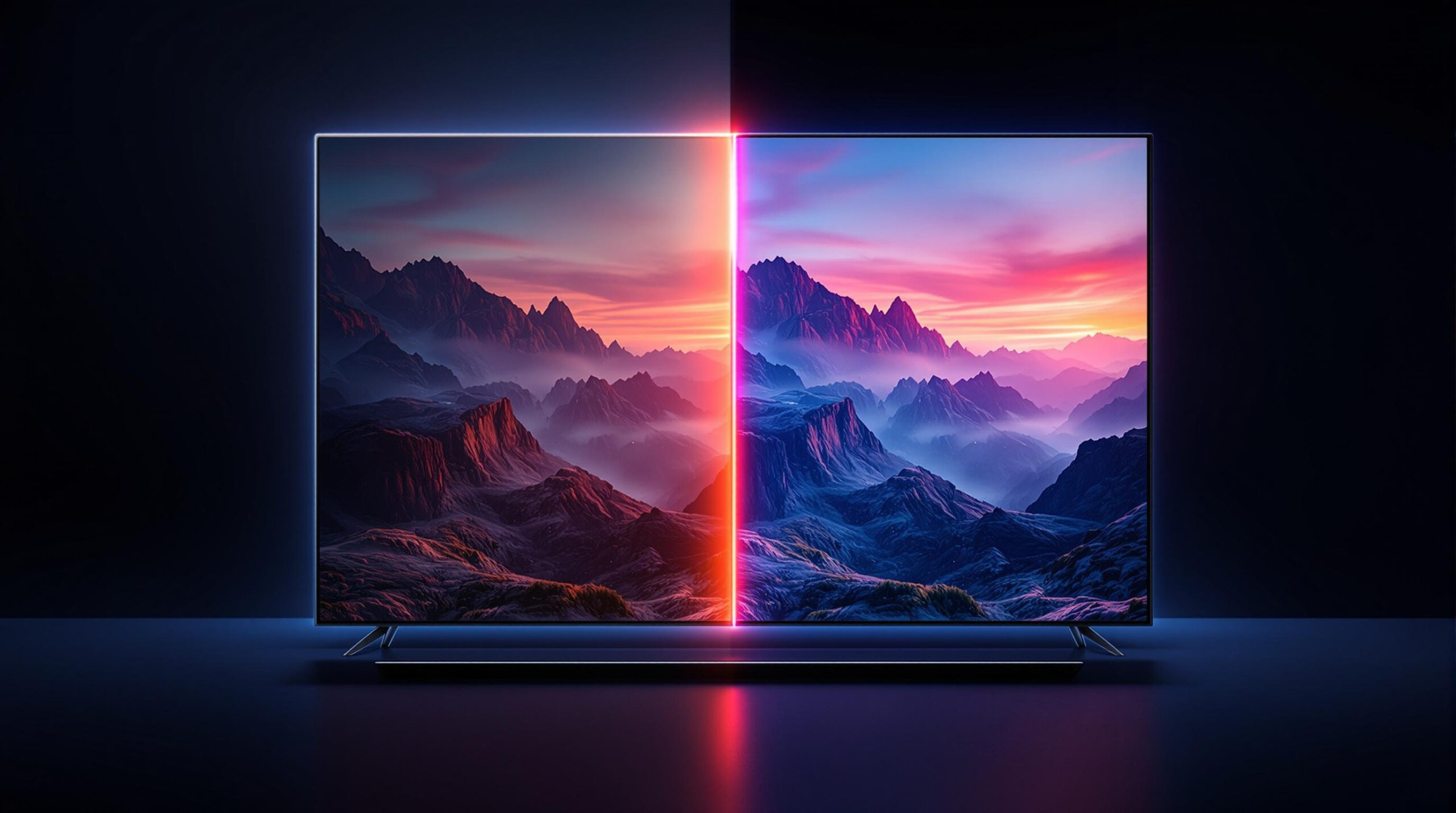In today’s entertainment ecosystem, 4K TVs have become the gold standard, promising stunning clarity, vivid color, and immersive sound. But delivering on that promise requires more than just pixels—it demands bandwidth. That’s where HDMI 2.1 steps in. This advanced version of the High-Definition Multimedia Interface isn’t just a new connector specification; it’s a technological leap designed to meet the growing needs of ultra-high-definition content, especially on OLED displays. Understanding HDMI 2.1 isn’t just about knowing specs—it’s about appreciating the underlying electrical engineering, material science, and display technologies that make next-gen 4K content possible.
HDMI: A Brief Technical History
HDMI, or High-Definition Multimedia Interface, was introduced in 2002 as a unified standard for transmitting uncompressed video and digital audio. The early versions supported 720p and 1080i video at 60Hz, suitable for the TVs of that era. But as resolution and refresh rate demands increased—especially with the rise of 4K and OLED TVs—the bandwidth limitations of older HDMI versions began to show.
HDMI 2.0, for instance, could transmit 4K video at 60Hz, but it lacked support for features like Variable Refresh Rate (VRR), Auto Low Latency Mode (ALLM), and higher frame rates at full 4K resolution. HDMI 2.1 was engineered from the ground up to handle this new era of content—pushing the interface into a bandwidth class that previously required multiple cables or proprietary solutions.
HDMI 2.1 and the Physics of Bandwidth
At its core, HDMI 2.1 is a data highway. Where HDMI 2.0 topped out at 18 Gbps (gigabits per second), HDMI 2.1 boosts that to an astonishing 48 Gbps using a new signaling method called Fixed Rate Link (FRL). This shift from Transition Minimized Differential Signaling (TMDS) to FRL allows data to be transmitted faster and more reliably, reducing overhead and enabling uncompressed 4K120 or even 8K60 signals.
Physics plays a crucial role here. Electrical signals traveling through copper conductors encounter resistance, capacitance, and inductance—phenomena that distort high-frequency data. To combat this, HDMI 2.1 uses advanced equalization, pre-emphasis, and clock recovery techniques at the transmitter and receiver ends. Signal integrity is preserved over short, shielded copper runs, but for longer distances, fiber-optic HDMI cables using light pulses are often required.
The Chemistry of OLED and Why HDMI 2.1 Complements It
OLED (Organic Light Emitting Diode) displays are composed of organic carbon-based compounds that emit light when stimulated by an electric current. Each pixel in an OLED screen is self-emissive, meaning it generates its own light and can turn on or off individually. This allows for true blacks, infinite contrast ratios, and incredibly fast response times.
To make the most of these advantages, OLED displays must receive a high-quality signal with minimal compression and accurate timing. HDMI 2.1’s support for uncompressed 4K at 120Hz ensures that the rapid pixel switching capabilities of OLED are not bottlenecked by insufficient data rates. In essence, HDMI 2.1 delivers the digital oxygen OLED needs to breathe at full performance.
In addition, OLED materials respond quickly to changes in signal input. This fast response means that frame delivery via HDMI must be perfectly timed and synchronized, especially when implementing features like VRR. The synergy between OLED chemistry and HDMI 2.1’s low-latency, high-bandwidth pipeline results in breathtaking visuals with near-zero artifacts.
Engineering Advances in HDMI 2.1 for Motion and Clarity
One of HDMI 2.1’s most notable features is its support for 4K at 120Hz and 8K at 60Hz. These higher refresh rates improve motion clarity significantly. The engineering challenge lies in transmitting this data without frame loss or signal degradation. HDMI 2.1 achieves this by leveraging the FRL protocol across four high-speed data lanes, each capable of carrying 12 Gbps.
These lanes are synchronized using sophisticated encoding and forward error correction (FEC) schemes, which allow for the reconstruction of corrupted data on the fly. This ensures that even if some interference occurs during transmission—say from electromagnetic fields generated by nearby electronics—the image on-screen remains stable and flawless.
In practical terms, this means that when you’re watching a fast-paced sports broadcast or playing a video game with intense motion, HDMI 2.1 keeps up. Combined with the instantaneous pixel transitions of OLED technology, the result is silky-smooth motion free from tearing, ghosting, or blur.
Variable Refresh Rate and OLED Perfection
Variable Refresh Rate (VRR) allows a TV’s refresh rate to match the frame rate output of a game console or PC graphics card. This eliminates screen tearing and stuttering—issues that occur when the display refreshes out of sync with the content source.
OLED TVs benefit immensely from VRR because their pixel response time is nearly instantaneous. However, if the HDMI connection cannot dynamically adjust the refresh interval, OLED’s performance potential is wasted. HDMI 2.1 includes native VRR support, ensuring a direct handshake between the source device and the display.
From an engineering perspective, enabling VRR involves dynamic timing control within the HDMI transceivers. These chips must monitor frame buffer output, predict next-frame timing, and adjust sync pulses in real-time. HDMI 2.1 achieves this while simultaneously maintaining 10- or 12-bit color depth and full resolution—a feat made possible only by the elevated bandwidth and precise clocking allowed by its new protocol.
Auto Low Latency Mode and Gaming Responsiveness
HDMI 2.1 also introduces Auto Low Latency Mode (ALLM), a feature that signals the display to enter a minimal-processing mode when a gaming device is detected. This reduces input lag—a key concern for competitive gamers—and ensures that on-screen action reflects controller input without delay.
This is particularly beneficial for OLED displays, where image processing layers are often bypassed to let pixel-switching speeds shine. By minimizing post-processing, OLED panels driven by ALLM via HDMI 2.1 can achieve latency under 10 milliseconds—fast enough to feel instantaneous to the human eye.
On the hardware side, this feature requires cooperation between source and sink devices. The HDMI link sends metadata flags indicating game mode activation, which triggers low-latency signal paths within the TV’s system-on-chip (SoC). These signal paths are engineered to bypass tone mapping, motion interpolation, and other processing steps, maintaining image fidelity while prioritizing speed.
Dynamic HDR and Bit-Perfect Color Delivery
HDR (High Dynamic Range) allows for a broader range of brightness and color. Static HDR, as used in HDMI 2.0, applies the same tone mapping to every frame. HDMI 2.1 introduces Dynamic HDR formats like Dolby Vision and HDR10+, where metadata adjusts scene-by-scene or even frame-by-frame.
OLED displays with perfect black levels and wide color gamuts stand to gain the most from Dynamic HDR. But to function effectively, the display must receive metadata in real-time alongside video content—something HDMI 2.0 often struggled with due to bandwidth and timing limitations.
HDMI 2.1 allows metadata to be transmitted in parallel with video using dedicated data channels. This engineering breakthrough ensures OLED panels receive precise instructions on how to render each frame, allowing for optimized contrast, accurate colors, and eye-popping highlight detail.
Enhanced Audio Return Channel (eARC)
Beyond video, HDMI 2.1 also improves audio with the introduction of eARC (enhanced Audio Return Channel). This feature supports uncompressed multichannel audio formats like Dolby TrueHD and DTS:X, providing studio-quality sound to soundbars and receivers.
While not directly tied to OLED chemistry, eARC’s benefits complement OLED’s visual advantages. A crisp, vibrant picture with a weak audio experience feels incomplete. eARC allows HDMI 2.1-connected OLED TVs to deliver synchronized audio-visual immersion—matching every frame of dazzling 4K content with equally stunning sound.
From a technical standpoint, eARC increases the audio bandwidth to up to 37 Mbps and utilizes dedicated clock signaling to maintain lip-sync accuracy. It replaces the older CEC-dependent control mechanism with more robust protocols and pin configurations within the HDMI connector.
Cable Considerations: Materials and Shielding at 48 Gbps
Transmitting data at 48 Gbps requires more than just good coding—it demands precision-engineered cabling. Ultra High Speed HDMI cables certified for HDMI 2.1 use low-loss materials like silver-plated copper conductors and enhanced shielding to prevent electromagnetic interference (EMI).
At these speeds, even minute physical characteristics matter. The dielectric insulation surrounding the conductors must be uniform, and impedance must remain tightly controlled across the entire length of the cable. Signal integrity is validated through eye pattern testing and jitter analysis to ensure consistent performance.
For OLED users, the importance of high-quality cabling can’t be overstated. Poor cables can introduce bit errors, leading to visible artifacts or audio dropouts. To maintain the full fidelity of an OLED experience—especially in 4K at 120Hz with HDR and 10-bit color—using certified HDMI 2.1 cables is a must.
OLED Engineering in the HDMI 2.1 Ecosystem
OLED manufacturers have responded to HDMI 2.1 with upgrades to their internal electronics. Display controllers now feature faster memory buffers and more powerful GPUs to process incoming high-bandwidth signals. Timing controllers (TCONs) have been re-engineered to manage faster frame rates and support dynamic metadata.
On the panel level, pixel-driving transistors have been tuned to accommodate higher refresh demands, especially in large-format OLEDs where uniformity and heat dissipation are engineering hurdles. These changes make HDMI 2.1 not just a connection standard—but a system-wide performance enabler across OLED TV architecture.
The Future: 8K, 240Hz, and Beyond
While HDMI 2.1 was designed with 4K in mind, its 48 Gbps pipeline also supports 8K video at 60Hz and 4K at 240Hz with display stream compression (DSC). OLED TVs are already beginning to ship with these futuristic specs, though mainstream content for them is still in development.
Nonetheless, as OLED materials evolve to support higher brightness and longer life at high refresh rates, and as HDMI 2.1 is adopted in game consoles, PCs, and streaming boxes, consumers will benefit from futureproofed setups that can handle whatever the industry throws next.
The next steps in display innovation—QD-OLED, microOLED, and tandem-stack OLEDs—will all rely on high-bandwidth, low-latency transmission. HDMI 2.1 will continue to serve as the vital conduit, ensuring that the brilliance of these panels reaches the viewer without compromise.
Conclusion: HDMI 2.1 Is the Lifeline of OLED Brilliance
HDMI 2.1 is not merely a technical upgrade—it is a transformational enabler of everything OLED TVs do best. From ultra-smooth 120Hz 4K visuals to frame-perfect gaming responsiveness, from vibrant dynamic HDR to uncompressed lossless audio, HDMI 2.1 provides the data highways that allow OLED to flex its scientific muscle.
With a foundation built on advanced signaling physics, high-purity materials, and meticulously engineered electronics, HDMI 2.1 stands as one of the most significant technological steps forward in display history. For anyone looking to truly unlock the power of their OLED 4K TV, HDMI 2.1 isn’t optional—it’s essential.
4K TV Reviews
Explore Philo Street’s Top 10 Best 4K TV Reviews! Dive into our comprehensive analysis of the leading OLED TV products, complete with a detailed side-by-side comparison chart to help you choose the perfect protection for your devices.




